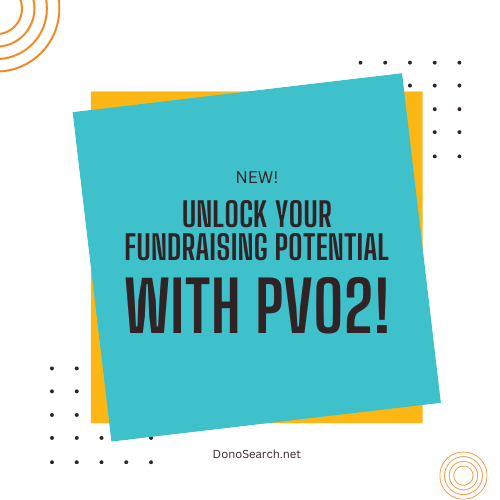
We Need More Generosity to Keep the Arts Flourishing—Here’s How DonorSearch Helps
The fine arts have a long history of dependence on charitable giving. Since civilization first emerged between the Tigris and Euphrates rivers, artists of all kinds—painters, sculptors, and poets—have survived not through the commercial sales of their work but rather through the patronage of wealthy benefactors. Back in ancient times, Sumerian kings, Egyptian Pharaohs, and Chinese Emperors invested large portions of their national treasuries in creating statues and monuments designed to celebrate their greatness. During the Renaissance, wealthy families like the Medicis, not to mention the Catholic Church, sponsored artists like Michelangelo, Leonardo Di Vinci, and Raphael to create some Western Civilization’s greatest masterpieces.
This tradition has continued throughout the modern era.
For example, during the Great Depression of the 1930s, the Roosevelt Administration created the Works Progress Administration (WPA), a major public works initiative that, in addition to building critical infrastructure, employed tens of thousands of artists, writers, actors, composers, and musicians, all helping to keep the arts alive and vital during one of America’s darkest periods.
Today, most of the world’s museums, symphony orchestras, and public theaters rely heavily on donations from major corporations, charitable foundations, and wealthy individuals to operate. As a result, ticket sales and admission fees account for only a small portion of their actual operating expenses. (For most museums, paid admissions to cover only about two to 33 percent of their annual budgets. The average is 10 percent.) Attend a production at any civic auditorium, and you’ll find the show’s program contains pages devoted to lists of local sponsors. And public broadcasting (PBS) regularly interrupts its most popular programs to ask viewers for private donations.
Sir Nicholas Serota Interview:
In a recent interview with Alliance Magazine, Sir Nicholas Serota, director of the UK’s Tate Modern, reflected on how philanthropy enables the arts, specifically the world’s most popular museum of modern art, to survive. “None of Tate’s expansion or the growth in audiences from 1.75 million to 7.75 million over 20 years would have been possible without a partnership between secure public funding,” Serota said. “One of our first significant donations for Tate Modern came from a man not noted for his enthusiasm for modern art. However, he was motivated to give because he recognized the need for London to have a museum of international contemporary art, and he knew that cultural investment in a relatively poor part of London could transform the area economically and socially.”
Fan or not of modern art, the world benefitted from this patron’s giving. To better understand what “fine arts” include and how devastating it would be to lose them, here are some of the many cultural offerings:
- Museums
- Opera and Ballet
- Community Theaters
- Libraries
- Public Media (including broadcasting)
- Arts Councils
Covid-19’s Negative Impact
The continuation of most symphonies, theaters and other fine art institutions is not a sure thing—even in the best of times. And COVID-19 has only made a difficult situation worse. Museums worldwide report the ongoing pandemic has negatively impacted not just their attendance but also their charitable income. Many have had to gut their staff, defer critical maintenance, curtail programs, and restrict operating hours. Due to the pandemic, financial losses to nonprofit arts and cultural organizations are estimated to be $13.1 billion as of September 2020. This pain has had a ripple effect on local communities, with restaurants and other businesses having lost an aggregate of $102.5 billion due to the disappearance of arts audiences.
DonorSearch’s Solution
For arts-related organizations facing a financial crisis, DonorSearch provides a desperately needed solution. DonorSearch Ai uses advanced artificial intelligence (AI) to target potential donors of all types with messaging that speaks directly to their connection with a non-profit or other organization that needs fundraising. Our approach differs from conventional outreach applications, which focus on a potential donor’s net worth and past philanthropic patterns when making electronic solicitations. By pairing strategic messages with each recipient’s individual sympathies/loyalties, like an affinity for fine arts, specific artists, music, dance, ballet, or theater, DonorSearch makes acquiring donations far more efficient, effective, and cost-effective.
Specifically, DonorSearch can help you:
- Better identify donors who have the capacity to give and identify with your cause or mission.
- Expand your prospect list with our philanthropy-focused prospect search database.
- Predict a prospect’s giving capacity with accurate, secure intelligence data.
According to medical experts, the COVID-19 pandemic is far from over. Even if the current omicron surge wanes this spring, the virus itself is likely to become endemic in the population. There is always the possibility—indeed, the likelihood—that new, even more, virulent variants will emerge. As a result, fine arts institutions will likely face funding shortages for the foreseeable future and will have to solicit strategically to maintain their survival. The danger of losing fine arts should alarm us all—no matter our artistic sensibilities. As the French philosopher and journalist Albert Camus remarked, “Without culture, and the relative freedom it implies, society, even when perfect, is but a jungle.” To learn more about how DonorSearch can support your critical fundraising activities and keep the arts flourishing in these difficult times, please contact our team of experts to arrange a demo of DonorSearch Ai today.

